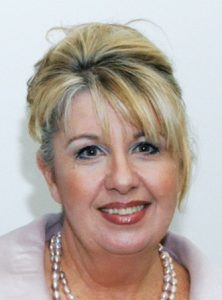Prompted by the plight of the Black Saturday bushfires and the legislation that soon followed in Victoria and South Australia, something had to be done.
This was a large project, not just for the Window and Door Industry Council (WADIC), but for any association that relies on its membership alone to fund such an activity.
 How many associations, like WADIC, are supplying informed solutions and tools to members to overcome obstacles that impede the ability to manufacture compliant, high-quality products?
How many associations, like WADIC, are supplying informed solutions and tools to members to overcome obstacles that impede the ability to manufacture compliant, high-quality products?
Although thoroughly researched and considered, this project was a lot more challenging and expensive than expected. It was a great boost to have the support of the Western Red Cedar Lumber Association (WRCLA) for the first and second stage of the testing, but unfortunately, not for this final stage that was just completed.
The WADIC timber members supplying Western Red Cedar to our manufacturing members were critical in securing the funding from WRCLA, which equated to 50 per cent of the cost of the earlier stages of testing (along with the added cost of the prototypes and assessments).
The latest round of testing outcomes now allows houses to include the WADIC Western Red Cedar Proprietary products. For those wishing to build with a Bushfire Attack Level (BAL) of less than or equal
to 29, there is an added level of comfort knowing that these products have been rigorously tested, rather than choosing to use products that just follow the ‘deemed to comply’ requirements of the Australian Standards document ‘AS3959-2009 Construction of buildings in bushfire-prone areas’.
We feel confident that if there was more funding available, other timbers would make the grade by incorporating the design elements of the WADIC member’s products. Unfortunately, funding is still the main stumbling block.
The latest round of testing was made up of a unique configuration. You could say it was “cobbled together”. It was one that, in its entirety, would not have been used in a normal house – but it contained all of the elements that members needed to have tested in order to cover a full suite of products.
A 2400 mm x 2400 mm prototype containing a sliding door system, sliding window system, and two double hung window configurations was assembled. The prototype was successfully tested, including the double hung windows, a spiral balance system and a counter balance pulley system.
If you wonder why these were left until last – then have a think about it! It’s very obvious.
GAPS
Gaps are the real concern when testing bushfire products, and the propensity of the flames and embers to often become trapped, continuing to burn or end up inside the building, is common.
This round of testing, including the prototype and the reporting, will cost approximately $30,000 when the final report is completed in early September. The testing process will have cost in excess of $150,000 once it is finally delivered to members in September/October.
STANDARDS REVIEW
I’m pleased to report that WADIC was recently afforded a seat on the next review sitting of the Australian Standard AS3959. The Board of Standards met recently and agreed to configure the Constitution to allow WADIC’s participation. We look forward to being involved in this process, given the wealth of knowledge gained from the extensive six rounds of testing.
WADIC continues to attend seminars and varied platforms educating certifiers, architects, builders, specifiers and, importantly, representatives of the fire brigades, with the products and their results from the testing.
During the most recent round of testing, representatives from the Victorian and New South Wales (NSW) fire brigades were in attendance. Breaking down the perceived barriers regarding the use of timber in bushfire areas and the marketing required of WADIC members products will be the next challenge.
WADIC members licensed to produce the tested products are listed on the WADIC website wadic.org.au.
This website will be constantly updated with those businesses holding current licenses, a point of referral that is crucial prior to selecting a suitable fabricator. There is representation in Queensland, NSW, Victoria, South Australia and Tasmania. All of these members are trained extensively with their staff to manufacture these products, accompanying the ‘deemed to comply’ requirements for bushfire areas.










